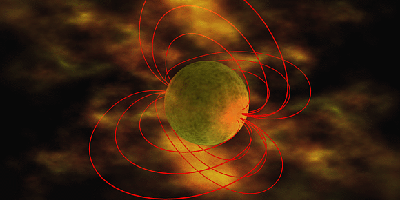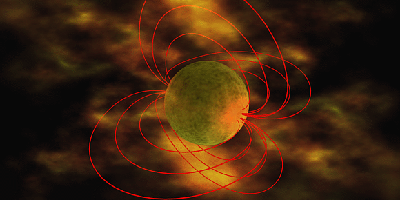Phonons in a Stellar Crust
The density of nuclear matter in a neutron star is fourteen orders of magnitude greater than any material on Earth, but this matter can undergo phase transitions similar to those found in normal solids. In a paper appearing in Physical Review C, Vincenzo Cirigliano and colleagues at Los Alamos National Laboratory in New Mexico present a theoretical description of phonon interactions in the exotic phases of matter found in neutron stars, which play a role in the stars’ physical properties.
The inner crust of a neutron star, which is of order a kilometer thick, is a mixture of electrons, neutrons, and ionized nuclei. According to theory, quantum effects and the interplay of nuclear and Coulomb forces between the particles can lead to the formation and coexistence of two phases: an ordered lattice of ionized nuclei and a neutron superfluid. Observational studies of accreting and magnetized neutron stars are increasingly sensitive to the properties of the crust and have motivated renewed interest in this two-phase state.
According to Cirigliano et al., interactions between neutrons and protons couple the oscillations (phonons) associated with the ionic lattice and the superfluid. A better understanding of this mixing of phonons may affect predictions of how the crust responds to thermal or mechanical perturbations. For example, in highly magnetized neutron stars called magnetars, the theory suggests there are limits to how anisotropic the temperature of the star can be.
The theory may also apply to terrestrial systems, as ongoing cold-atom experiments seek to achieve similar crystalline-superfluid phases. – Benjamin F. Gibson and Joseph I. Kapusta





